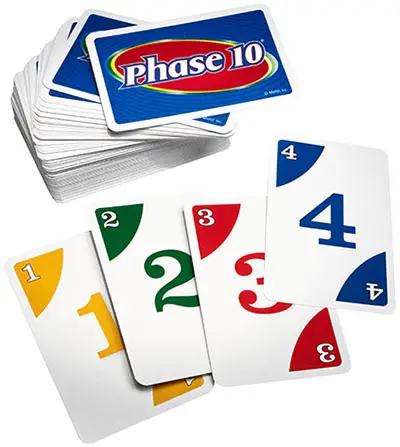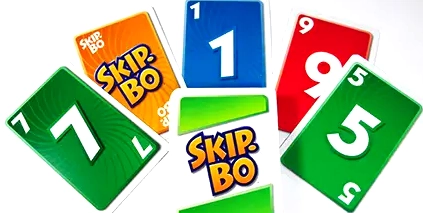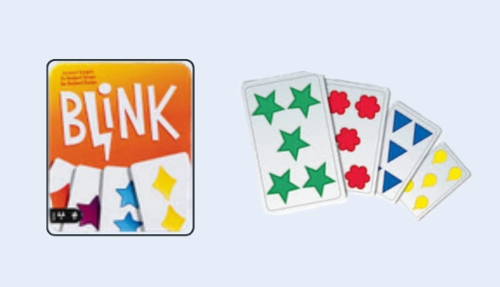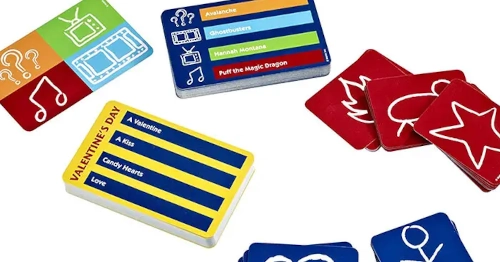UNO is one of the most loved card games, but did you know it has siblings? These complementary games, like Phase 10 and Skip-Bo, bring unique twists to card game enthusiasts. Let’s explore these games, learn their basic rules, and how they add variety to your game nights.
Why Play Complementary Games Alongside UNO?
Complementary games extend the fun of card game sessions. They blend strategy, luck, and creativity, making them ideal companions for UNO fans. From challenging patterns in Phase 10 to the fast-paced fun of Blink, each game offers something unique.
What is Phase 10?
Phase 10 is a card game where players aim to complete 10 unique phases (or objectives) in order. Phases can involve sets, runs, or a combination of numbers. This game adds strategic depth and keeps players engaged as they tackle each phase.

Looking for a detailed guide on how to play? Check out our comprehensive Phase 10 Rules for step-by-step instructions and expert tips!
What is Skip-Bo?
Skip-Bo is a sequential card game where players try to build piles in numerical order. It’s great for fans of strategy and planning, as it rewards careful thinking and patience.

Want to master Skip-Bo? Explore our detailed Skip-Bo Rules for gameplay tips and strategies!
What is Blink?
Blink is all about speed! Players race to match cards by shape, color, or number. It’s a quick and energetic game perfect for those who enjoy fast decision-making.

Curious about the fastest card game ever? Read our complete Blink Rules to learn how to play and win!
What is Pictionary?
While not a traditional card game, Pictionary combines drawing and guessing. Players draw prompts from cards and try to get their team to guess the image. It’s a creative break from competitive card games.

Need help getting started? Check out our full Pictionary Rules guide for everything you need to know!
What is Bold?
Bold challenges memory and luck. Players flip over cards to find matches, but they must decide when to stop or risk losing their turn. It’s a great blend of risk and reward.

Interested in Bold’s exciting gameplay? Discover our step-by-step Bold Rules and start playing like a pro!
What is Apples to Apples?
This party game focuses on humor and creativity. Players match nouns to descriptive cards, and the judge picks the funniest or most fitting match. It’s perfect for larger groups.

Ready to add some humor to game night? Read our detailed Apples to Apples Rules for the best playing experience!
Benefits of Exploring Complementary of UNO Games
- Variety: Keeps your game nights fresh and exciting.
- Skill Development: Improves different skills like memory, speed, and strategic thinking.
- Family-Friendly Fun: Perfect for players of all ages.
When to Play These Complementary Games?
- After UNO: Use these games to keep the fun going.
- Game Night Theme: Plan a card game night with different rounds for each game.
- Teaching New Players: Introduce friends and family to card games beyond UNO.
Conclusion
If you love UNO, these complementary games will add new dimensions to your gaming sessions. Each offers a unique challenge, ensuring your game nights stay engaging and entertaining. Try them out, and let the fun begin!
FAQs
What makes Phase 10 different from UNO?
Phase 10 focuses on completing specific objectives, called phases, while UNO is about discarding cards by matching colors or numbers. This makes Phase 10 more strategic.
Can I play Skip-Bo solo?
Yes, Skip-Bo has a solo mode where you build sequences to clear your stockpile. It’s great for practicing strategy when playing alone.
Is Blink suitable for children?
Definitely! Blink’s simple rules and quick gameplay make it perfect for kids. It’s also great for improving pattern recognition and decision-making skills.
Does Apples to Apples require large groups?
While best with larger groups, Apples to Apples can still be played with 4-5 players by adjusting the rules for quicker rounds.
What’s the best way to start complementary UNO games?
Start with fast games like Blink or Bold, then move to strategic ones like Phase 10 or Skip-Bo. It helps to introduce them step by step.

